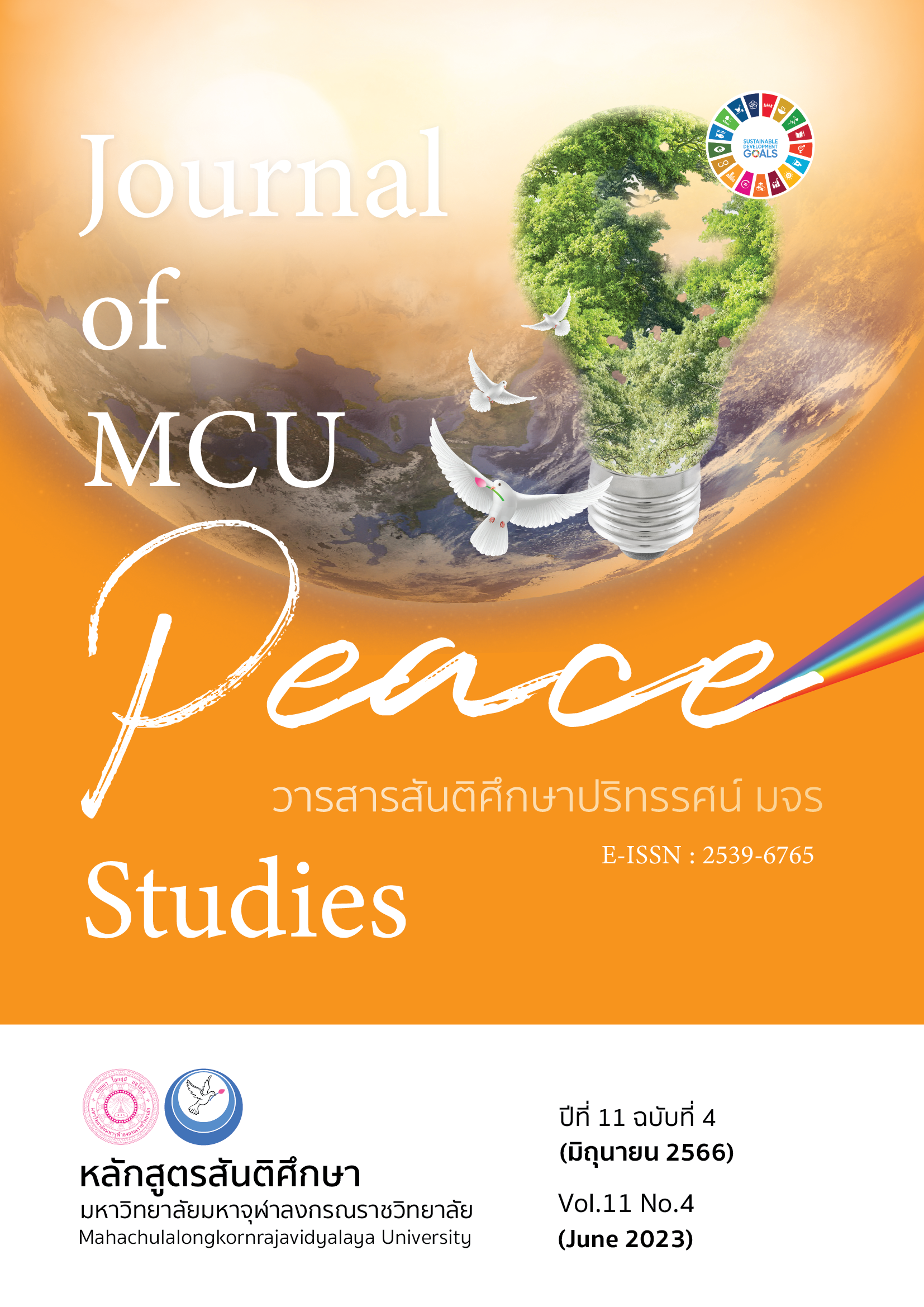ปัจจัยที่ส่งผลต่อความตั้งใจบริโภคอาหารประจำถิ่นเกาะสมุย
Main Article Content
บทคัดย่อ
บทความวิจัยนี้มีวัตถุประสงค์เพื่อ 1) ศึกษาพฤติกรรมการบริโภคอาหารประจำถิ่นเกาะสมุย 2) ศึกษาระดับของปัจจัยที่ส่งผลต่อความตั้งใจบริโภคอาหารประจำถิ่นเกาะสมุย 3) เปรียบเทียบปัจจัยส่วนบุคคล ต่อความตั้งใจบริโภคอาหารประจำถิ่นเกาะสมุย และ 4) หาความสัมพันธ์ระหว่างปัจจัยการบริโภคอาหารประจำถิ่นกับความตั้งใจบริโภค อาหารประจำถิ่นเกาะสมุย เป็นการวิจัยแบบผสมผสาน ระหว่างระเบียบวิธีการวิจัยเชิงคุณภาพ และระเบียบวิธีการวิจัยเชิงปริมาณ ประชากร และกลุ่มตัวอย่างเป็นผู้บริโภคชาวไทย ที่เคยบริโภคอาหารประจำถิ่นเกาะสมุยจำนวน 400 คน ใช้วิธีการสุ่มแบบบังเอิญ สถิติที่ใช้ คือ ค่าความถี่ ค่าร้อยละ ค่าเฉลี่ย ค่าความเบี่ยงแบนมาตรฐาน การทดสอบความแตกต่างของค่าเฉลี่ยใช้สถิติ ( t-test) การวิเคราะห์ความแปรปรวนทางเดียว (One -way ANOVA) และค่าสัมประสิทธิสหสัมพันธ์ ของเพียร์สัน
ผลการวิจัย พบว่า 1) พฤติกรรมการบริโภคอาหารประจำถิ่น อาหารประจำถิ่นเกาะสมุย 3 อันดับแรกที่เคยรับประทาน อาหารคาว คือ หมูโค ยำสาหร่ายข้อ และวายคั่ว อาหารหวาน คือ กะละแม ขนมโค และโต้วน ส่วนผลไม้ คือ ลูกไฟกา ลูกโท้ และลูกขี้กวาง นิยมรับประทานที่ร้านอาหารที่มีชื่อเสียง รับประทานเพราะมีรสชาติที่เป็นเอกลักษณ์ ใช้วิธีการซื้อ วัตถุดิบจากคนในชุมชนเพื่อประกอบอาหารประจำถิ่น 2) ปัจจัยด้านอัตลักษณ์อาหาร ด้านคุณภาพอาหาร ด้านทัศนคติ และด้านความสะดวกมีผลต่อความตั้งใจบริโภคอาหารประจำถิ่นในระดับมากที่สุด 3) ปัจจัยส่วนบุคคลด้านอายุ ด้านรายได้มีความแตกต่างกันอย่างมีนัยสำคัญทางสถิติที่ระดับ .05 และ 4) ปัจจัยด้านคุณภาพอาหาร ด้านทัศนคติ ด้านความสะดวก และด้านอัตลักษณ์อาหารมีความสัมพันธ์ต่อความตั้งใจบริโภคอาหารประจำถิ่นอย่างมีนัยสำคัญทางสถิติที่ระดับ .05
Article Details

อนุญาตภายใต้เงื่อนไข Creative Commons Attribution-NonCommercial-NoDerivatives 4.0 International License.
ทัศนะและความคิดเห็นที่ปรากฏในบทความในวารสาร ถือเป็นความรับผิดชอบของผู้เขียนบทความนั้น และไม่ถือเป็นทัศนะและความรับผิดชอบของกองบรรณาธิการ ยินยอมว่าบทความเป็นลิขสิทธิ์ของวารสาร
เอกสารอ้างอิง
Agmapisarn, C., Phunyapoo, W., & Chaowanasilp, W. (2017) The Image of Food Tourism in Thailand from the Service Provider’s Perspective. Journal of Business Administration and Social Sciences Ramkhamhaeng University, 2(3), 37-59.
Chi, C. G.-Q., Chua, B. L., Othman, M., & Karim, S. A. (2013). Investigating the Structural Relationships between Food Image, Food Satisfaction, Culinary Quality, and Behavioral Intentions: The Case of Malaysia. International Journal of Hospitality & Tourism Administration, 14(2), 99-120.
Choe, J. Y. J., & Kim, S. S. (2018). Effects of Tourists’ Local Food Consumption Value on Attitude, Food Destination Image, and Behavioral Intention. International Journal of Hospitality Management, 71, 1–10.
Donald Getz, Richard N. S. Robinson, Tommy D. A., & Sanja Vujicic. (2014). Foodies and Food Tourism. Oxford: Good Fellow Publishers, Ltd.
Food and Drug Administration – FDA. (2016). Continue Strategy Food Authority of Thailand. Bangkok: Health Promotion Foundation.
Ing, P. G., Zheng Lin, N., Xu, M., & Thurasamy, R. (2020), "Customer Loyalty in Sabah Full Service Restaurant". Asia Pacific Journal of Marketing and Logistics, 2(7), 1407-1429.
Jithpakdeepornrat, T., & Pooripakdee, S. (2021). The Effects of Street Food Indentity on Generation Z Customers Purchasing Intention, Satisfaction and Advocacy. Journal Network Promoting Research in the Humanities and Social Sciences, 4(1), 14-28.
Jutaviriya, K., Sannhavong, K., & Inthiphon, K. (2011). Consumption of Local Food and Social Changes in Vientiane in the Era of Globalization. Journal of Mekong Societies, 7(2), 49-73.
Maya, K. (2017). A Study of the Factors Affecting Popularity of Local Food Preferences of Residents of Chanthaburi Province. Chanthaburi: Rambhai Barni Rajabhat University.
MGR Online. (2009). Sumui Food and Product Fair. Retrieved May 9, 2021, from https://mgronline.com/south/detail/
Ramrong, T., Wongkitrungruang, C., Patananurak, P., & Palakas, S. (2021). Potential of Local Foods for Tourism Promotion Through Local Food: A Case Study of Trang Province Meuang Kon Chang Gin. Journal of Social Sciences and Humanities, 47(2), 59-74.
Rodroongsad, P. (2013). Importance and Communicative Learning Activities Through Food Tourism for International Women Market Tourists of Thailand. Journal of Thai Hospitality and Tourism, 8(1), 61-72.
Sanon, W., & Suantong, K. (2019). The Study of Local Healthy Food from Identity of Community-Based Tourism for Health Tourism Destinations in Western Thailand: A Case Study of Maha Sawat Canal Community-Based Tourism, Maha Sawat
Sub-district, Putthamonthon District, Nakhon Pathom Province. Journal of Management Science Nakhon Pathom Rajabhat University, 6(2), 97-114.
Sarojwong, K. (2017). Factors Affecting Local Food Preferences of Residents of Trat Province. Chanthaburi: Rambhai Barni Rajabhat University.
Sinjaru, T. (2020). Research and Analyze Statistical Data with SPSS and AMOS. Bangkok: S R Printing Mass Product Co., Ltd.
Sirichodnasakorn, C. (2016). The Development of Creative Local Food Innovation for Tourism Products in Petchaburi and Prachuap Khiri Khan Provinces. (Doctoral Dissertation). Silpakorn University. Bangkok.
Siriyong, C., & Thoomthong, T. (2018). The Administration Approach for Healthy City in Municipality of Koh Samui. Journal of Local Governan and Innovationt, 2(2), 1-18.
Suwannarak, J., Pungnirund, B., & Sangma. W. (2022). Casual Factors Influencing Tourist Loyalty to the Consumption of Local Food in the Eastern Economic Corridor. Journal of MCU Peace Studies, 9(5), 1857-1870.
Tourism Authority of Thailand. (2020). Amazing Thailand “Koh Samui”. Retrieved May 3, 2021, from https://thai.tourismthailand.org/Destinations/Provinces
Wongkrajang, K. et al. (2018). Study of Identity and Uniqueness of Phuket Local Food toward to Creative City of Phuket. (Research Report). Bangkok: Kasetsart University.
Wongpen. (2016). Effects of E-Word of Mouth and Consumer Attitudes on Brand Loyalty of Korean Restaurant among Customers in Bangkok Area. (Master’s Thesis). Bangkok University. Pathum Thani.
Yotaruk, P., & Bunnak, K. (2017). Taking Tourism Promotion Policy for Implementation: Case Study of Koh Samui District, Suratthani Province. Journal of Humanities and Social Sciences, 8(2), 119-140.


